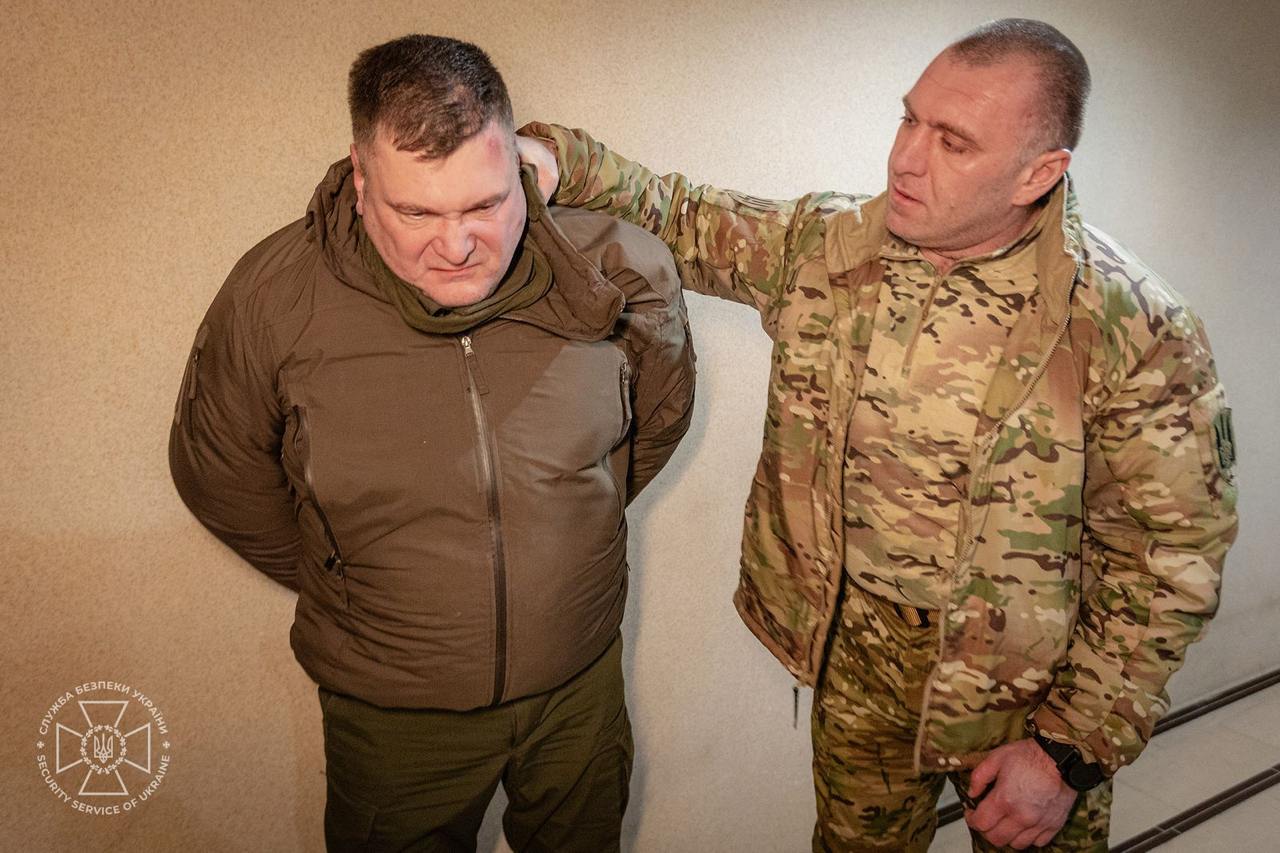New details from ex-SSU employee: how the mole avoided detection
12 February 21:03
The SBU conducted an unprecedented special operation and exposed a top FSB operative in its ranks. The head of the agency, Vasyl Malyuk, personally detained a high-ranking official who worked for Russia’s special services.
According to the SBU, the Russian agent was the chief of staff of the SBU Anti-Terrorist Center, who was recruited by the FSB back in 2018.
To neutralize the enemy agent, an unprecedented special operation codenamed “Rat” was conducted. The operation included a set of overt and covert measures that allowed not only to expose the spy, but also to use him to disinform the enemy.
“We controlled his every move”
SBU Head Vasyl Malyuk emphasized that the FSB agent was under constant control of the Ukrainian special services:
“The traitor had been in the development of SBU internal security officers for a long time. We were literally “living” in his phone, monitoring his contacts, correspondence, communication. He was constantly under audio and video surveillance,” Vasyl Malyuk
According to Malyuk, the disclosure of such an agent is a historic special operation, given his professional training and potential threat to state security. He also confirmed that he had personally reported on the operation to the Supreme Commander-in-Chief, President of Ukraine Volodymyr Zelenskyy.
Former SBU officer Ivan Stupak explained in an exclusive commentary to [comersant ] that the “rat” had access to analytical information, although he did not manage operational operations:
“He was not responsible for operational operations, but he received analytical reports on what was happening and what was planned. Generalized planning and informal connections were really his specialty,” Ivan Stupak
All this time, the traitor was in sleep mode. It was only in December 2024 that he woke up at the behest of the Russians and began to spy, Stupak adds. Since then, he has been under control – there have been intercepts of phone calls, video, audio. A lot of disinformation was transmitted to the Russians through him, Stupak notes
Regarding the number of FSB agents in the ranks of Ukrainian law enforcement agencies, Stupak emphasized that there may be more such traitors, as they are recruited not only for the idea but also for money.
“The SBU quickly identifies and documents them. The only question is why it is taking so long – we need to collect evidence so that the case can go through the courts quickly. Most likely, he will face life imprisonment,” summarizes Ivan Stupak
What is known about the detainee?
According to Ukrinform, Dmytro Kozyura is the head of the Anti-Terrorist Center of the Security Service of Ukraine. There is almost no information about the colonel in open sources. It is known that in 2023 he took part in an event to improve Ukraine’s anti-terrorist security in a full-scale war. The forum was held at the National Academy of the Security Service of Ukraine.
At that time, Kozyura publicly spoke about the importance of strengthening the state system of counterterrorism:
“The organization of this event is an opportunity to share experiences, exchange views and learn new ways to improve the state system of counterterrorism. Joint work will allow us to develop recommendations that will increase the security of our country in the face of the enemy.”
At the same time, after his detention, SBU Head Vasyl Malyuk said that since 2016, Kozyura had been heading the SBU’s Anti-Terrorist Department.
However, the criminal case file also includes the detainee’s parents. According to the investigation, they justified Russian aggression, approved of Putin’s actions and knew about their son’s work for the FSB. The issue of serving them suspicion notices under Art. 436-2 of the Criminal Code (justification of Russian aggression against Ukraine) is currently being considered .
Details of the special operation: mole coordinators and evidence base
According to the investigation, the Russian special service, through its agents, received information about:
- The location and movement of Ukrainian troops;
- Arming of the Security and Defense Forces of Ukraine;
- The state of critical infrastructure after Russian shelling;
- Information about thecountry‘stop military and political leaders;
- Functioning of state registers after the cyberattack in December 2024.
The collected information could have been used to conduct subversive activities against Ukraine.
The traitor used a safe house in Kyiv to communicate with the FSB. For data transmission, he received a special cell phone, Wi-Fi router and SIM card, through which he transferred documents containing state secrets to Russians .
The SBU established that the network was coordinated by FSB officer Yuriy Shatalov. The operatives also found a communication channel with Moscow, organized through a Ukrainian who fled to Russia. According to the investigation, this person was a member of Andriy Kliuyev’s headquarters during the Revolution of Dignity, was an assistant to a Party of Regions deputy and was involved in financing the Anti-Maidan.
Currently, he is being served with a notice of suspicion of treason. The investigation has a strong evidence base, including:
- Interception of agents’ negotiations;
- Information passed to the enemy;
- Audio and video recordings, correspondence, etc.
The official was served a notice of suspicion under Art. 111 of the Criminal Code (high treason). He faces life imprisonment with confiscation of property.
The operation was conducted by the SBU jointly with the Prosecutor General’s Office. Ukrainian special services continue large-scale work to expose Kremlin agents in government agencies.
Since the beginning of the full-scale invasion, the SBU has been systematically exposing FSB agents in its structures.
“We promptly respond to threats and effectively counteract the enemy. The process of cleansing is ongoing, and we are doing everything to protect Ukraine from internal and external threats,” emphasized Vasyl Maliuk
The SBU continues to work to identify and neutralize Russian agents in critical state structures.









